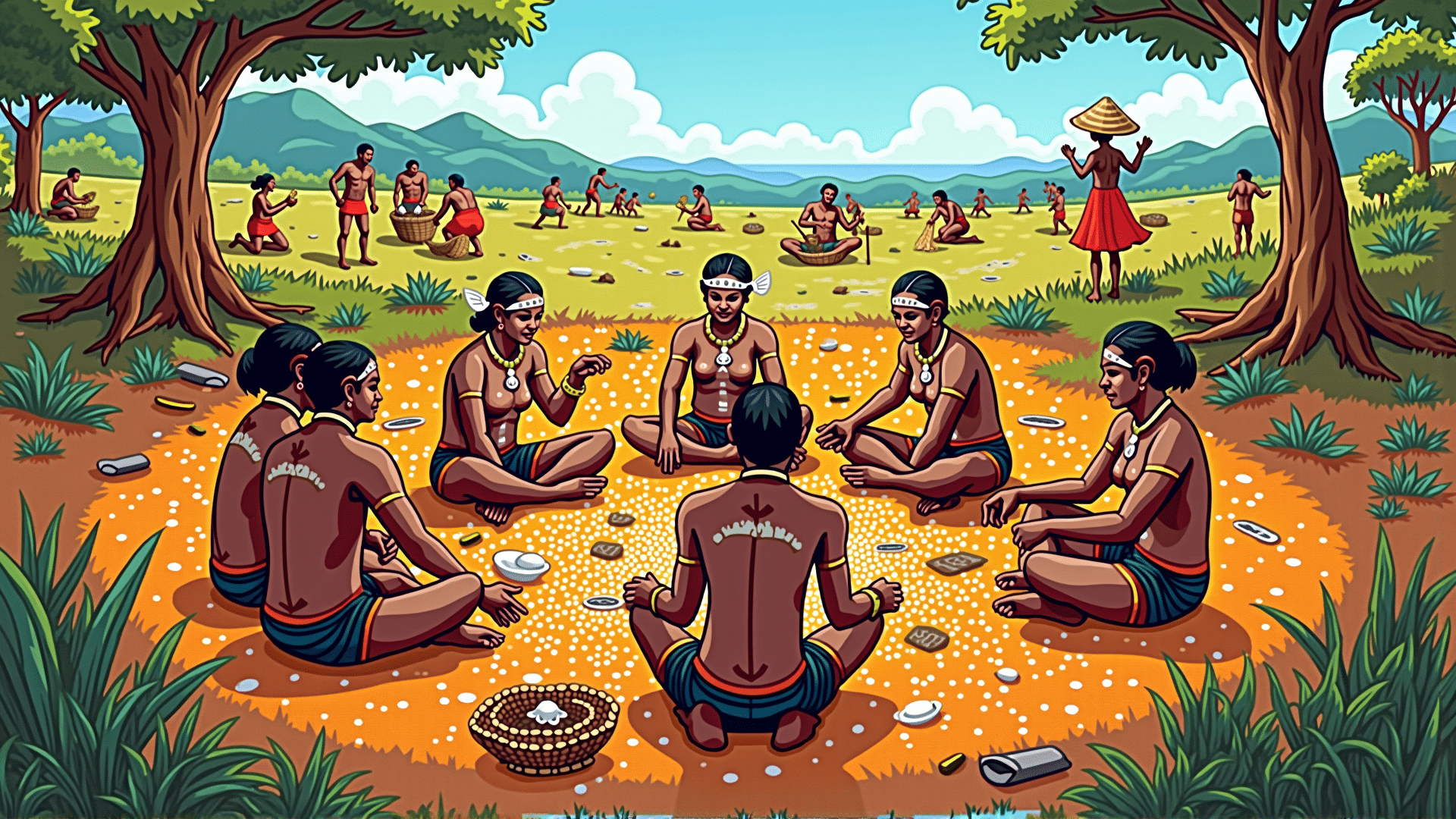Indigenous Australian societies have long embraced a holistic understanding of communal prosperity that extends beyond mere accumulation of material resources. For many Aboriginal and Torres Strait Islander communities, the idea of wealth is intertwined with spirituality, social relationships, and community well-being, forming a system that prioritizes collective harmony and sustainability.
At the heart of these systems is the profound connection to the land, often referred to as 'Country'. The land provides for the community, not just in terms of physical sustenance, but through spiritual nourishment and identity. In many Indigenous cultures, the land itself is seen as a living entity, with its own stories, dances, and songs that sustain both human life and the natural world. This intrinsic link between people and their environment facilitates a communal approach to resource distribution.
In Indigenous communities, the concept of sharing is pivotal. Resources like food, water, and tools are often distributed according to need and social roles rather than individual ownership. This system ensures that all community members are supported, fostering an environment of mutual care and responsibility. Elders, as the keepers of knowledge and tradition, play an integral role in overseeing these practices, ensuring that resources are shared equitably and sustainably.
Cultural ceremonies also play a significant role in these systems. These gatherings serve as opportunities for communities to strengthen social bonds and exchange resources. The practice of 'exchange' is deeply rooted in reciprocity and kinship, emphasizing relationships over transactions. Through these exchanges, communities can adapt to changing environmental conditions, ensuring resilience and sustainability over time.
Moreover, storytelling and oral traditions are potent tools for transferring knowledge about resource management across generations. Such stories often carry teachings about the responsible use of natural resources, respect for all living things, and the importance of maintaining balance within the ecosystem. Through storytelling, the principles of stewardship and collective care are embedded in community consciousness.
Today, the integration of traditional practices with contemporary approaches to resource distribution continues to be vital. Indigenous Australian systems of wealth creation and distribution offer invaluable lessons in sustainability, resilience, and community cohesion. They remind us of the importance of nurturing our connections with each other and the earth, reinforcing the notion that true prosperity is measured not by accumulation but by the well-being of the entire community.
